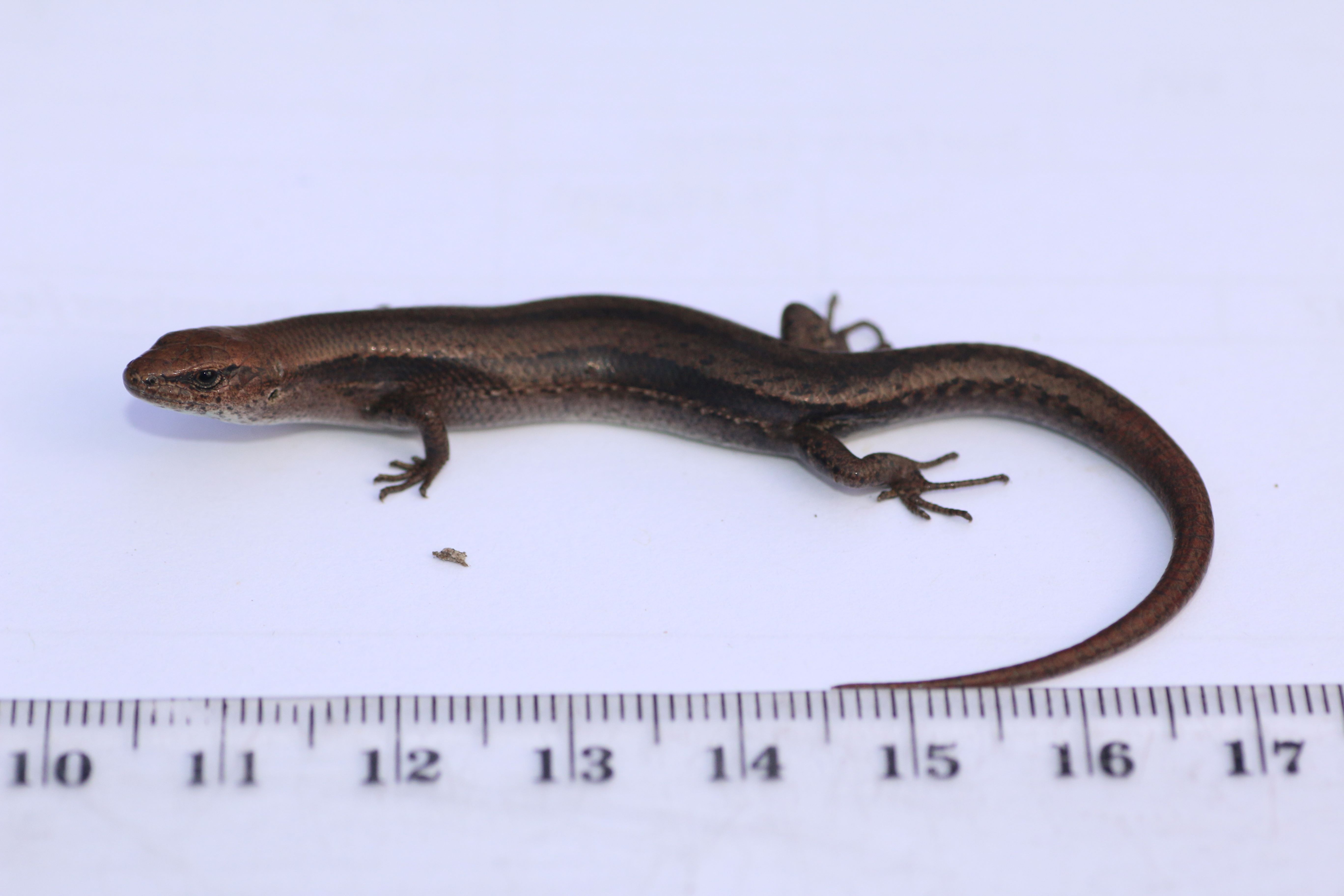
Prescribed burning in the Mount Lofty Ranges to reduce bushfire risks may be threatening the survival and biodiversity of skinks and other reptiles.
That's the finding from a new University of South Australia (UniSA) study that analysed the health of more than 1750 reptiles from eight species over a two-year period.
The study, published in Forest Ecology and Management, investigated how reptiles respond to fire in native stringybark forests of the Mount Lofty Ranges, one of South Australia's key biodiversity hotspots.
According to lead author, UniSA PhD candidate Shawn Scott, the garden skink, Lampropholis guichenoti, had "significantly poorer body condition immediately following prescribed burns".
"This suggests that in the short term for the garden skink, fire may be depleting food sources, exposing them to predators, or otherwise stressing these animals in ways we hadn't fully appreciated," Scott says.
In burnt areas, skinks showed the lowest body condition scores - a key indicator of animal health - in the first six months post-fire. While their condition improved over time, the initial decline raises concerns about long-term impacts, especially with increasingly frequent burns.
Interestingly, the study found that reptiles with injuries such as tail loss (a common escape tactic known as autotomy), missing digits, or scarring had significantly lower body condition in two species. This suggests that injury, whether from predators or territorial fights exacerbated by reduced shelter, may compound the impact of fires on their health.
Reptiles recaptured at study sites also told a compelling story. The skink L. guichenoti was most often recaptured in long-unburnt forests (more than 20 years since a fire), suggesting these habitats support higher survival or lower site emigration.
South Australia's Mount Lofty Ranges have seen an increase in prescribed fire activity in recent years, with 5% of high-risk vegetation areas targeted annually. Yet this region also contains some of the state's most fragmented and ecologically important woodlands.
"Prescribed burns are often advocated as beneficial for biodiversity," says Scott, "but our research adds to growing evidence that one-size-fits-all approaches to fire may be harmful to small animals. More nuanced strategies, such as preserving long-unburnt refuges and monitoring fire effects on reptiles, are urgently needed."
The researchers used a combination of a before-after control-impact (BACI) and fire-age chronosequence experimental design across 18 sites, ranging from recently burnt to more than 20 years post-fire.
Their detailed analyses incorporated body measurements, injury records, and recapture rates, providing one of the most comprehensive evaluations to date of reptile responses to fire in South Australian forests.
The authors stress that more research is needed into the post-fire ecology of reptiles, especially in the face of climate change and increasing fire severity.
"We had La Niña, mild, conditions," says co-author and UniSA wildlife ecologist Assoc Prof S. "Topa" Petit. "The results could be more dramatic after a drought, for example."
"Reptiles are critical for healthy ecosystems - they control insect populations and serve as prey for birds and mammals," says Scott. "If fire regimes are compromising their health or numbers, it could have cascading effects on the whole ecosystem."
"Effects of prescribed fire on body condition, injury, frequency, and recapture of reptiles in Mediterranean-type eucalypt forests is authored by researchers from the University of South Australia, Mid Torrens Catchment Group, and Kangaroo Island Research Station DOI: 10.1016/j.foreco.2025.122683






